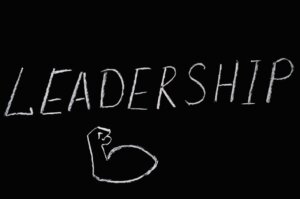This is a guest post from Dr. Greg Waddell.
Management and Leadership are two very different systems of human behavior. Both are essential to the success of an organization; yet, like the repulsing polarity of two magnets, they push against one another and, if not kept in balance, can end up ejecting one or the other causing great damage to the organization and its people. It is difficult, yet necessary, to maintain both strong leadership and strong management simultaneously.
People are naturally reluctant to step into change and the discomfort we experience when we find ourselves in the midst of ambiguity. Much of what we call “organization” is the struggle to reign in that ambiguity and bring things back to a state of equilibrium. Management is about developing systems and processes that enable us to take dominion over chaos. It is an attempt to create a semblance of order and constancy in an inherently complex situation. It’s about designing plans and systems for monitoring progress and controlling outcomes. It involves solving problems, giving reports, having meetings, and developing policies, all for the purpose of bringing things to a place of efficiency, where the ambiguity is dispelled and people can feel comfortable again.
The problem is that, in a rapidly-changing environment, equilibrium can be deadly. The external environment today is a bit like whitewater rafting. To survive, you have to constantly shift your weight from one side of the raft to the other, thrust your paddle first to the left and then to the right, or use it to push off a rapidly approaching rock. This is when you need leadership rather than management.
Leadership is about change. It’s about helping the organization define its vision, one that can take advantage of opportunities and avoid oncoming threats. It’s about challenging people to grow and to unleash their yet untapped potential. It’s about inspiring people to step into uncharted territory. Leaders get nervous when things are running too smoothly; often introducing innovative ideas just to stir things up a bit. CEO, Renato Beninatto of Milengo, a translation and localization industry, uses the term “chief instigator” to describe his job. Whereas managers constantly try to adjust to change, leaders are in the business of producing change.
It’s important to understand that both are necessary for success. Unfortunately, some organizations I have been acquainted with continue to value management over leadership. In these situations, the leadership function can be mistakenly identified as subversive to the organization’s welfare. The call for unity is often a demand that those with innovative thoughts keep them to themselves. The status quo is confused with the sacred. If organizations are to stay afloat and thrive in today’s volatile environment, they must recognize that leadership is essential. In the Bible there is a saying about putting new wine into old wineskins and thus causing the wineskins to burst because they lack flexibility. The new wine must be put into new wineskins. Management tries to hold the wine in a manageable form. Leadership is the process of changing from the old, dried-out, leaky wineskins to the new, more resilient, more adjustable forms.
You can email Dr. Greg Waddell at [email protected], Also, see his website at www.SpiritOfOrganization.com
 Sections of this topic
Sections of this topic
















